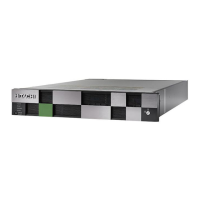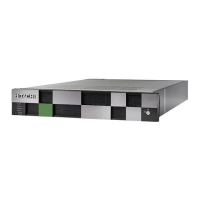Recovery procedure
1. Recover the external system. For details, contact the vendor.
2. Recreate or resynchronize the pair.
Related topics
•
Pair condition before failure on page 6-7
Pair condition and recovery: other failures
The following table shows transitions for pair status and I/O mode, the
volumes that are accessible from the server, and the location of the latest
data when a failure other than explained above occurs.
Before failure After failure
Pair status and I/O
mode
Pair status and I/O
mode
Volume
accessible from
the server
Volume
with latest
data
P-VOL S-VOL P-VOL
S-VOL
1
P-VOL S-VOL
PAIR (Mirror
(RL))
PAIR (Mirror
(RL))
PSUE (Local) PSUE
(Block)
OK NG P-VOL
PSUE
(Block)
SSWS
(Local)
NG OK S-VOL
COPY
(Mirror
(RL))
COPY
(Block)
PSUE (Local) PSUE
(Block)
OK NG P-VOL
NG
1
NG P-VOL
PSUS/PSUE
(Local)
SSUS/PSUE
(Block)
PSUS/PSUE
(Local)
SSUS/PSUE
(Block)
OK NG P-VOL
NG
1
NG P-VOL
PSUS/PSUE
(Block)
SSWS
(Local)
PSUS/PSUE
(Block)
SSWS
(Local)
NG OK S-VOL
NG
NG
2
S-VOL
Notes:
1. Depending on the failure factor, if you cannot access the P-VOL, you cannot access
neither P-VOL nor S-VOL.
2. Depending on the failure factor, if you cannot access the S-VOL, you cannot access
neither P-VOL nor S-VOL.
SIM
• Primary system: SIM varies depending on the failure type
• Secondary system: SIM varies depending on the failure type
Recovery procedure
1. Recover the system.
6-46
Disaster recovery of global-active device
Hitachi Virtual Storage Platform G1000 Global-Active Device User Guide

